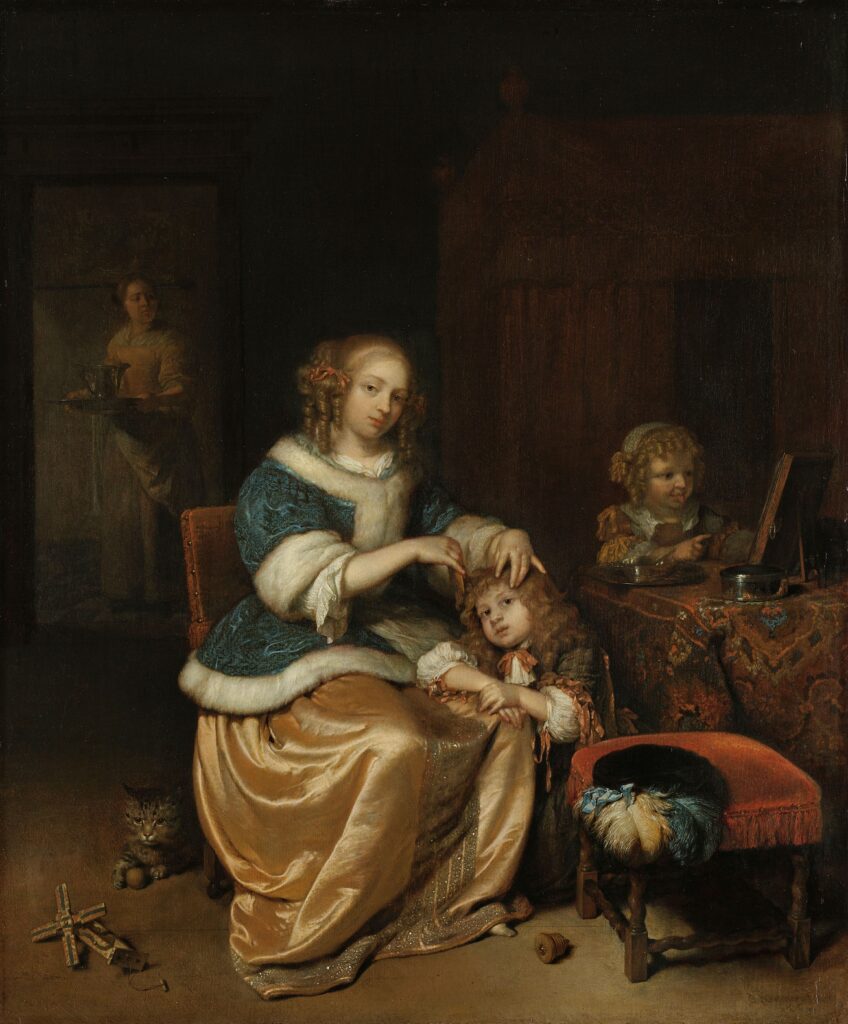Howard Fischer
Uppsala, Sweden

“As far as we can ascertain, since man has existed the louse has been his inseparable companion.”1
Bathing, and even washing the hair and the face, were not common practices in seventeenth-century Europe. Children and adults of every social class, from the “the most privileged, to the poorest teemed with lice.”2 Head lice, small (1–4 mm), wingless insects, cling to human hair shafts, pierce the skin of the scalp, and suck blood. They produce much itching, but no medical complications.
The painting Maternal Care (1669) by Caspar Netscher (1639–1684) shows an expensively dressed young woman with her maid in the background. The young mother is inspecting her son’s hair for lice. It was always the woman’s responsibility to delouse the hair. Many other seventeenth-century artists depicted similar scenes.
References
- Hans Zinsser. Rats, Lice and History. Boston: Little, Brown and Company, 1963.
- Katherine Aschenburg. The Dirt on Clean. An Unsanitized History. New York: North Point Press, 2007.
HOWARD FISCHER, M.D., was a professor of pediatrics at Wayne State University School of Medicine, Detroit, Michigan.

Leave a Reply